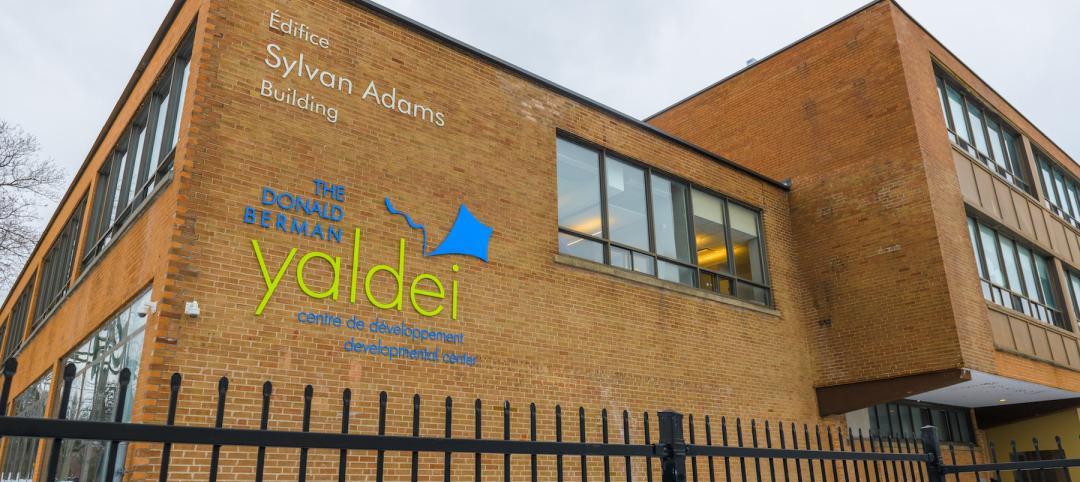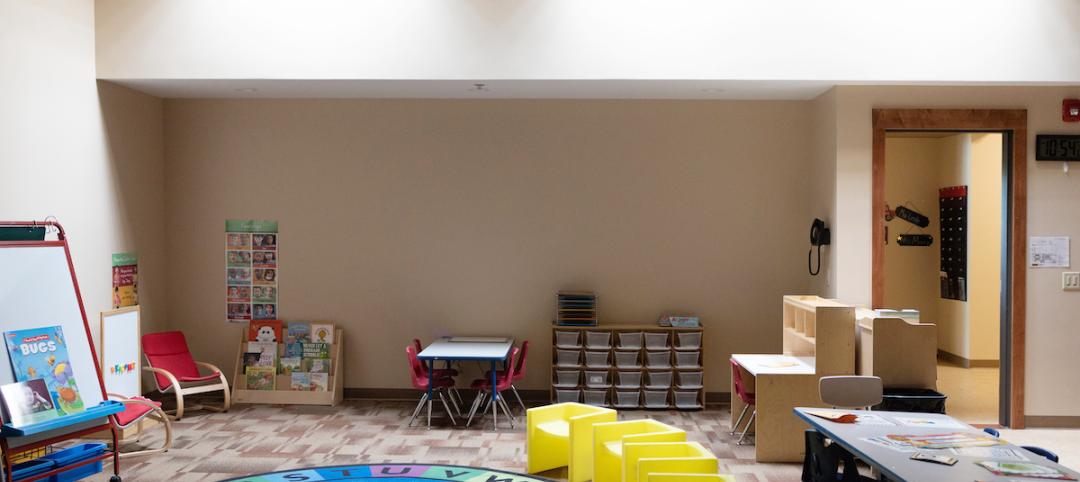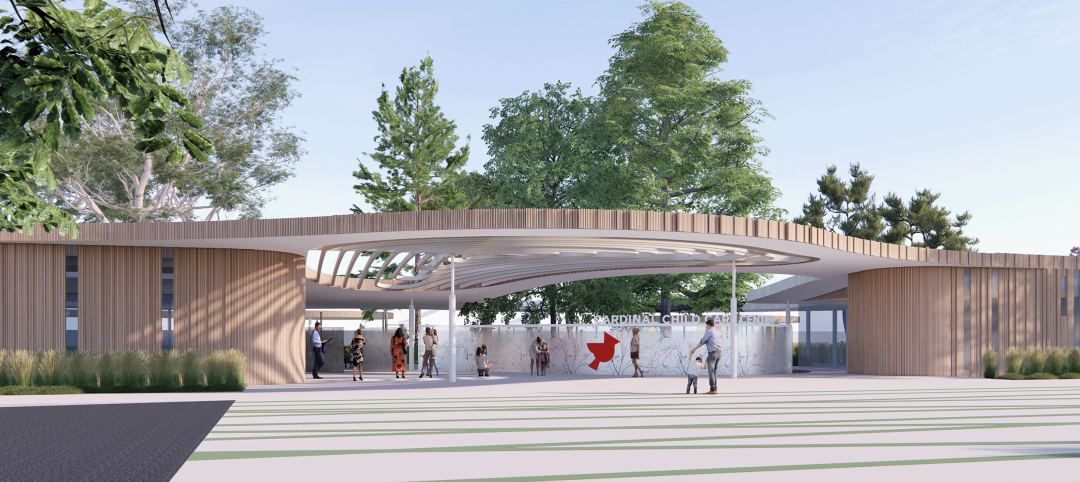One of the more compelling arguments for charter schools is their theoretical ability to streamline decision making. Eliminate all those layers of bureaucratic fat that clog the arteries of most public school systems, the argument goes, and decisions can be made to flow much more smoothly, even when it comes to designing and building a major school project.
That's the theory, but when the charge is to design and build a new charter high school in just over three months, it takes more than fast-tracking to make the project succeed.
Five years ago, teachers, parents, local business owners, high-tech advocates, and entrepreneurs in Anchorage, Alaska, came together to discuss creating a charter school as an alternative for middle and high school students. They envisioned a small school with a low student-teacher ratio that taught a technology-rich curriculum, problem solving, and team-building skills through project-based education.
Their efforts paid off when the Anchorage School District chartered an innovative, tuition-free secondary school in late spring 2003 to serve a maximum of 450 7th–12th graders. The new facility, named Highland Technical High School, was to be built in time for occupancy in August.
The timing couldn't have been better for local developer J. L. Properties The developer had recently purchased the Boniface Mall of East Anchorage, which included an abandoned Safeway supermarket.
Seizing the opportunity, J.L. Properties and Anchorage school officials engaged a design-build team consisting of local general contractor Davis Constructors & Engineers, local architect RIM Architects, and its sister firm RIM Design. The lease was signed in April 2003, leaving just 14 weeks to completely renovate the 30,000-sf supermarket.
Meeting a pencil-thin budget
The Building Team quickly learned that the school founders wanted a design that supported the innovative educational model proposed in the charter, but were somewhat vague on what that meant.
"When we first met with them, they had no idea what the program was going to be," says Rolland Reed, principal in charge at RIM Architects. "We really had to work with them on a fast-track basis to turn it into design and then reality." Added to that was the challenge of turning a drab, empty building into a modern, stimulating environment on a budget of roughly $60 a square foot.
The solution was to model the overall design concept after the unique aspects of the school's program. To meet a tight budget and schedule and still design an open, interactive facility, basic cost-effective construction materials were used to define free-flowing partitions with portions of the metal stud framing exposed. "With so little money and time, exposing the building structure, the metal studs, and the centrally located computer wires all worked," says Reed.
"If we had gone through the normal design-by-committee process of a school district, we could have never had it done [in time], so it certainly was a help that it was a charter school," says Sheila Shanks, interiors principal in charge, RIM Design. "We also had a lot of recent design-build projects with the developer and this contractor, so we were able to move quickly to accommodate the schedule."
Demolition began on May 4, 2003, with the removal of the cashier line, shelving units, freezers, and mechanical/electrical mezzanine.
Structurally, Davis limited its work to adding brackets to seismically reinforce the roof-to-tilt-up concrete wall connection. "It would hold snow all day long, but as far as today's seismic codes, it wasn't up to snuff," says John Pepperd, Davis project manager.
Interior walls were treated more like visual screens than as structural elements. They were punctuated with clear openings and translucent polycarbonate panels which assist in connecting interior rooms. Some partitions have been left unfinished and open at the ceiling in order to temper the large volume of the existing space and to avoid compartmentalization of rooms.
All electrical and HVAC utilities were left exposed. Producing an open ceiling system of cable trays and heating ducts contrasted by the wood ceiling gave the school a contemporary feeling and kept construction costs low.
RIM included a new energy-efficient lighting system of high-output fluorescent and high-bay HID fixtures. Heating and cooling was addressed with a new boiler with baseboard and a roof-mounted heating package unit. Because the facility would be used primarily during the shoulder seasons and not in summer, ceiling fans were substituted for a more expensive vent system to keep heat circulated, says Reed.
Material procurement management was also a key concern for general contractor Davis had to monitor to keep the project on schedule. "Up here in Alaska, everything has to be shipped," says Pepperd. "If the designers pick a tile that's not available in Seattle or Portland or somewhere on the West Coast, it's pretty much a show-stopper," because the tile would never get to there on time.
High-tech learning environment
The space was ready for full occupancy and furniture installation in August 2003, a little more than three months after the lease was signed.
The program for the school is based on a comprehensive digital learning environment that integrates technology, connectivity, and digital content into the classroom. There is a computer workroom with 150 stations and seven seminar rooms. "The school is real technology driven, and they learn everything on computers, from biology to history," says project designer Megan Taushek of RIM Interiors. "When they dissect a frog, they don't actually have a frog in front of them." The focus is on project-based work.
The school has six tech labs: a project lab, an intelligent systems lab, a pre-engineering lab, a communications lab, an information technology lab, and an environmental lab. All rooms are wired for audio-visual projection units, and the tech labs are equipped for various types of technology, including environment lab studies, robotics, and even flight simulation. Highland Tech also supports a wireless environment for laptops and hand-held devices.
The curriculum includes numeric literacy; oral and written communication literacy; reading and literature; technological literacy; science and global environments; social environments; personal, social, and service skills; and career and content literacy. Students must demonstrate what they know through presentations, simulations, and real-life applications.
In at least one respect, getting the high-tech effect led to problems. High ceilings, walls that end four feet lower than the ceiling, curved walls, and the lack of doors made the interior pretty noisy. "It's one of the first questions we raised," adds Reed. "We asked if it would be a problem, but they said they wanted that 'live' kind of environment. Now they're finding it's acoustically a little too live, and they're adding some acoustical panels on the ceiling to further dampen the sound."
Overall, the Building Team remains confident that they met not only the logistical and budgetary demands of the school board, but also the educational needs of the students.
"Right away, we heard very positive response from the students," says Reed. "Kids can immediately relate to it, it's very complementary to the program, it's high tech, it's unusual, and it's cool."
He adds: "One thing we learned from this project is that this type of open planning with basic materials is very good for a program that's still not yet defined. There's no backtracking, and no losing your investment."
Related Stories
K-12 Schools | Feb 18, 2023
Atlanta suburb opens $85 million serpentine-shaped high school designed by Perkins&Will
In Ellenwood, Ga., a southeast suburb of Atlanta, Perkins and Will has partnered with Clayton County Public Schools and MEJA Construction to create a $85 million secondary school. Morrow High School, which opened in fall 2022, serves more than 2,200 students in Clayton County, a community with students from over 30 countries.
K-12 Schools | Feb 11, 2023
An elementary school in Canada for intellectually challenged kids completes a three-year-long facelift
Last fall, the Yaldei School in Montreal, Quebec, which provides education and therapy to children ages 4 through 16 with intellectual disabilities, completed a $4.5 million renovation of the three-story former parochial school that it had moved into in 2016. The goal of this project, by the firm Stendel + Reich Architecture, was to create spaces that relieve students’ anxiety and make things fun.
Giants 400 | Feb 9, 2023
New Giants 400 download: Get the complete at-a-glance 2022 Giants 400 rankings in Excel
See how your architecture, engineering, or construction firm stacks up against the nation's AEC Giants. For more than 45 years, the editors of Building Design+Construction have surveyed the largest AEC firms in the U.S./Canada to create the annual Giants 400 report. This year, a record 519 firms participated in the Giants 400 report. The final report includes 137 rankings across 25 building sectors and specialty categories.
Giants 400 | Feb 6, 2023
2022 Reconstruction Sector Giants: Top architecture, engineering, and construction firms in the U.S. building reconstruction and renovation sector
Gensler, Stantec, IPS, Alfa Tech, STO Building Group, and Turner Construction top BD+C's rankings of the nation's largest reconstruction sector architecture, engineering, and construction firms, as reported in the 2022 Giants 400 Report.
K-12 Schools | Jan 25, 2023
As gun incidents grow, schools have beefed up security significantly in recent years
Recently released federal data shows that U.S. schools have significantly raised security measures in recent years. About two-thirds of public schools now control access to school grounds—not just the building—up from about half in the 2017-18 school year.
ProConnect Events | Jan 16, 2023
6 more BD+C ProConnect Events in 2023 – The videos show why you should participate
ProConnects bring building product manufacturers and suppliers together with architects, contractors, builders, and developers to discuss upcoming projects and learn about new products and technical solutions.
K-12 Schools | Dec 23, 2022
Vacant Target store in Minnesota turned into early childhood education center
Lincoln School, a former 90,000-sf Target retail store in Fergus Falls, Minn., was repurposed into Independent School District 544’s newest campus.
Multifamily Housing | Dec 21, 2022
Bay Area school district builds 122 affordable apartments for faculty and staff
The 122 affordable apartments at 705 Serramonte, Daly City, Calif., were set aside not for faculty and staff at Jefferson Union High School District.
K-12 Schools | Dec 20, 2022
Designing an inspiring, net zero early childhood learning center
LPA's design for a new learning center in San Bernardino provides a model for a facility that prepares children for learning and supports the community.
Sponsored | Resiliency | Dec 14, 2022
Flood protection: What building owners need to know to protect their properties
This course from Walter P Moore examines numerous flood protection approaches and building owner needs before delving into the flood protection process. Determining the flood resilience of a property can provide a good understanding of risk associated costs.















